Selecting the right thread for sewing a canopy is pivotal to its longevity and performance in outdoor environments.
A canopy, exposed to sunlight, rain, and wind, demands a thread that can withstand diverse weather conditions.
This selection involves material compatibility, UV resistance, and weather resilience.
The thread weight, strength, and durability play crucial roles in determining the robustness of the canopy’s seams.
Colorfastness maintains the aesthetic appeal, while thread construction methods contribute to seam integrity.
Trustworthy brands and quality threads ensure a reliable and enduring solution. In essence, the choice of thread is critical to crafting a resilient canopy fit for outdoor durability.
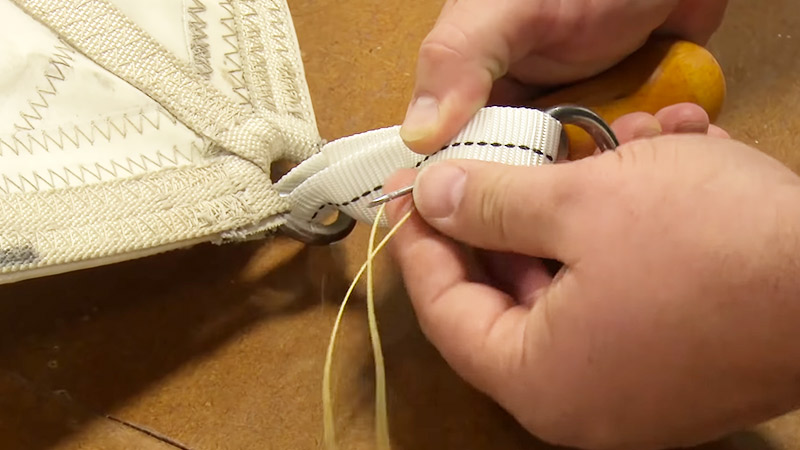
What Kind of Thread to Sew the Canopy? Key Factors
When sewing a canopy, selecting the right thread is crucial to ensure the durability and longevity of the finished product.
Canopies are often exposed to various environmental factors such as sunlight, wind, rain, and temperature fluctuations, so choosing the appropriate thread is essential for withstanding these conditions.
Here are some key factors to consider when selecting what type of thread to use for outdoor fabric:
Material Compatibility
Ensure that the thread is compatible with the canopy fabric. For instance, if you’re working with polyester or nylon fabrics, choose a thread designed explicitly for synthetic materials. If using canvas, a heavy-duty cotton thread might be more appropriate.
UV Resistance
Threads exposed to sunlight over time can weaken and degrade. Look for threads labeled as UV-resistant or designed explicitly for outdoor use.
These threads often have additives that protect against the harmful effects of prolonged sun exposure.
Weather Resistance
Canopies face various weather conditions. Threads that are water-resistant or possess mold and mildew resistance are crucial for maintaining the integrity of the seams, especially if the canopy is likely to be exposed to rain or high humidity.
Thread Weight
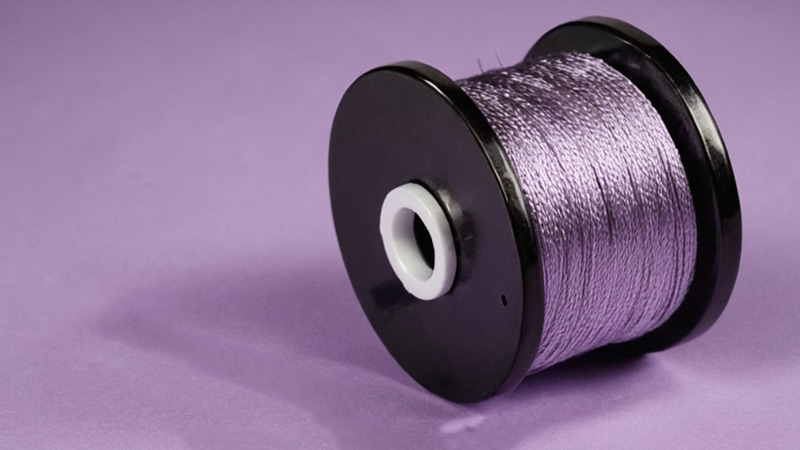
Consider the weight or thickness of the thread. Thicker threads provide more strength, making them suitable for heavy fabrics and load-bearing seams.
However, it’s essential to match the thread weight with the capabilities of your sewing machine to prevent issues like tension problems or skipped stitches.
Strength and Durability
Look for threads with high tensile strength. Threads labeled as heavy-duty or designed for outdoor applications typically have the strength to withstand the stress and tension exerted on canopy seams, especially in windy conditions.
Colorfastness
Choose threads that are colorfast to maintain the aesthetic appeal of the canopy. Threads that resist fading ensure that the vibrant colors of the fabric stay true over time, even when exposed to sunlight.
This is particularly important for canopies used in events or outdoor spaces where visual appeal is a priority.
Brand and Quality
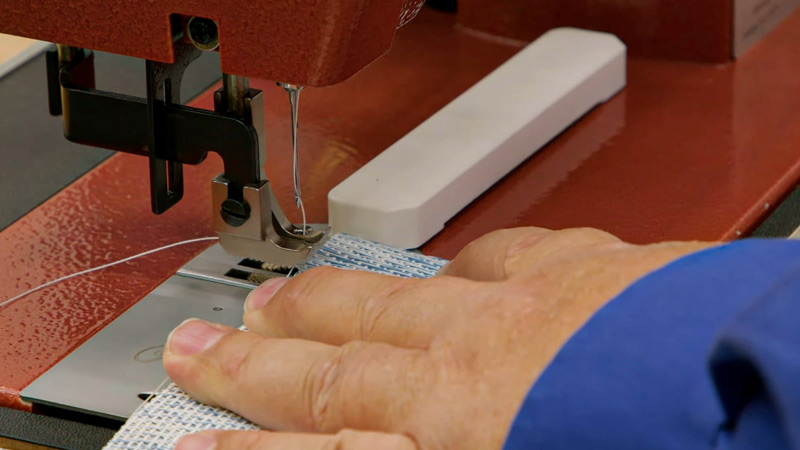
Invest in threads from reputable brands known for producing high-quality products. Quality threads may have undergone rigorous testing and are more likely to offer superior strength, durability, and consistency.
While they may come at a slightly higher cost, the benefits in terms of performance often justify the investment in long-lasting canopies.
Thread Construction
Consider the construction method of the thread. Bonded threads have added strength due to the bonding process; twisted threads are plied together for durability, and braided threads offer additional strength and resistance to fraying.
The choice depends on the specific requirements of your canopy project and the characteristics needed for the seams.
Best Threads for Sewing Canopies
Choosing the best threads for sewing canopies is crucial for ensuring durability and resilience in outdoor conditions.
Here are the top thread options that are well-suited for sewing canopies:
Polyester Thread
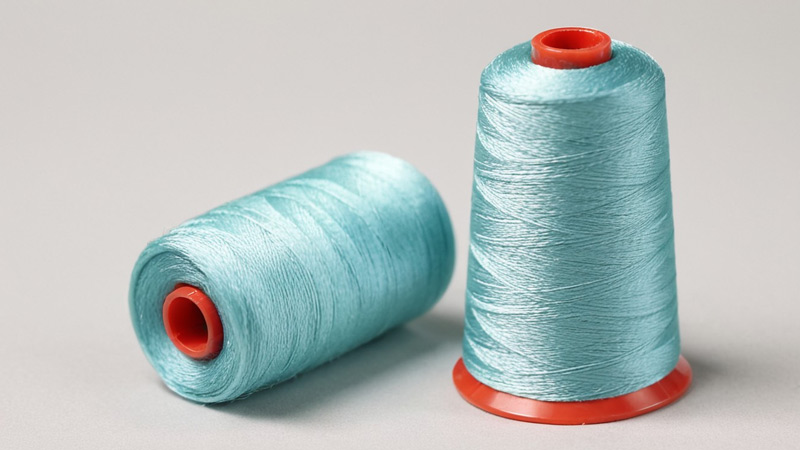
Polyester threads are a versatile and widely chosen option for sewing canopies due to their exceptional UV resistance.
The inherent ability to withstand prolonged sun exposure ensures the threads maintain their strength and color over time, preventing weakening or fading.
Polyester is lauded for its durability, making it well-suited for outdoor applications where canopies face various environmental challenges.
Additionally, polyester’s resistance to moisture enhances its performance, providing added reliability for canopies exposed to rain or dew.
UV resistance and durability make polyester threads an excellent choice for crafting resilient and long-lasting canopy seams.
Bonded Nylon Thread
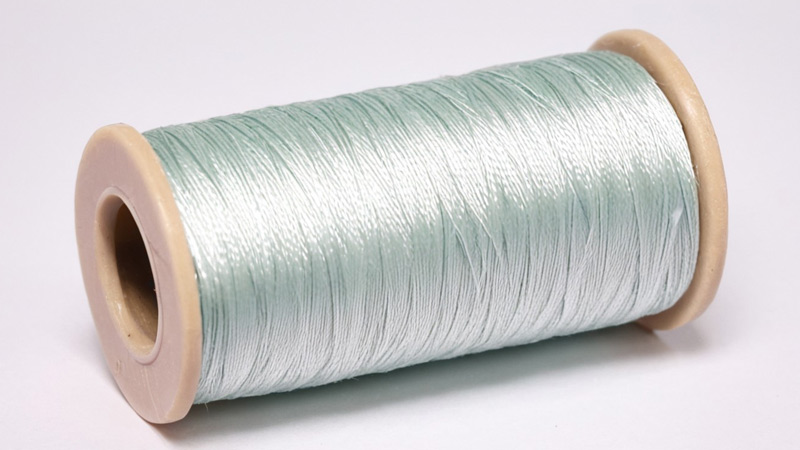
Bonded nylon threads stand out for their outstanding strength and durability, making them an ideal choice for sewing canopies.
These threads’ bonding process enhances their resistance to abrasion, a crucial feature for canopies exposed to friction and wear.
Nylon threads, in general, are known for their overall resilience and resistance to UV rays, ensuring that the seams maintain their integrity even under prolonged sun exposure.
Whether facing harsh weather conditions or regular use, the robust nature of bonded nylon threads makes them a reliable option for crafting sturdy and enduring canopy constructions.
Outdoor Thread
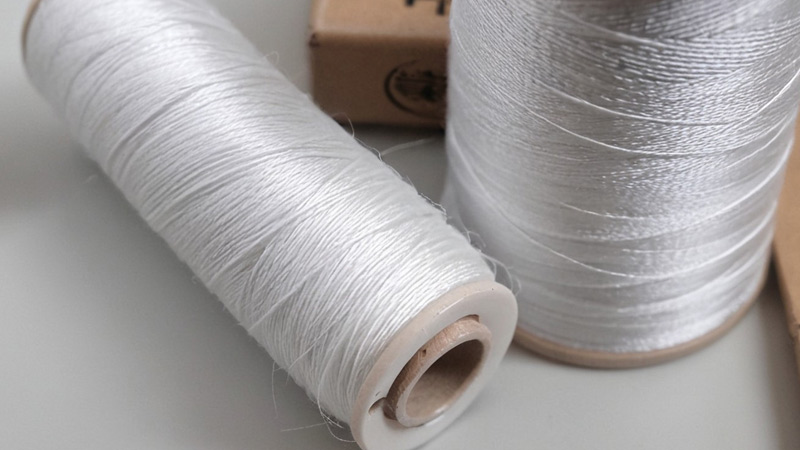
Threads explicitly labeled as “outdoor” or “all-weather” are specifically engineered to meet the challenges posed by outdoor applications, making them an excellent choice for sewing canopies.
These threads often combine essential qualities such as UV resistance, water resistance, and colorfastness.
The synergistic combination of these features ensures that outdoor threads provide optimal performance, withstanding diverse weather conditions.
Whether the canopy faces sunlight, rain, or varying temperatures, outdoor threads contribute to the longevity and reliability of the stitched seams, making them well-suited for crafting canopies designed to thrive in outdoor environments.
UV-Resistant Thread
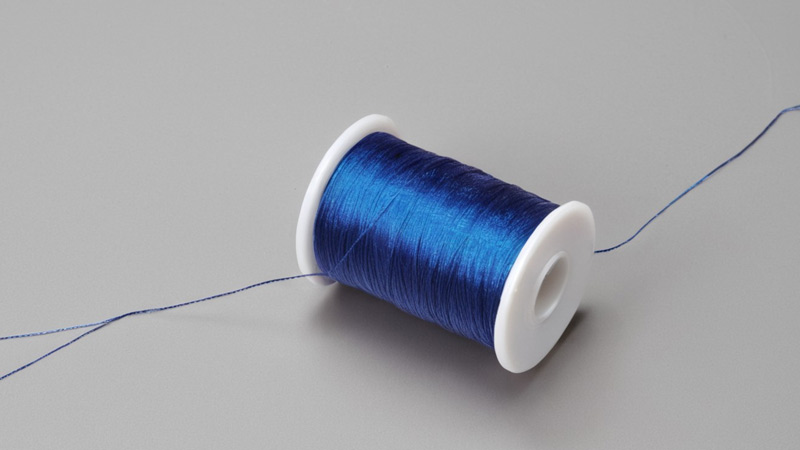
UV-resistant threads are designed to endure the harmful effects of prolonged sunlight exposure, making them a reliable choice for canopy construction.
These threads undergo treatments that shield them from UV rays, ensuring they maintain their strength and color integrity over time.
Often exposed to direct sunlight, canopies benefit significantly from UV-resistant threads, preventing premature weakening or fading.
The specialized nature of UV-resistant threads makes them a valuable component in crafting canopies that offer shade and withstand the challenges posed by continuous exposure to sunlight.
Marine-Grade Thread
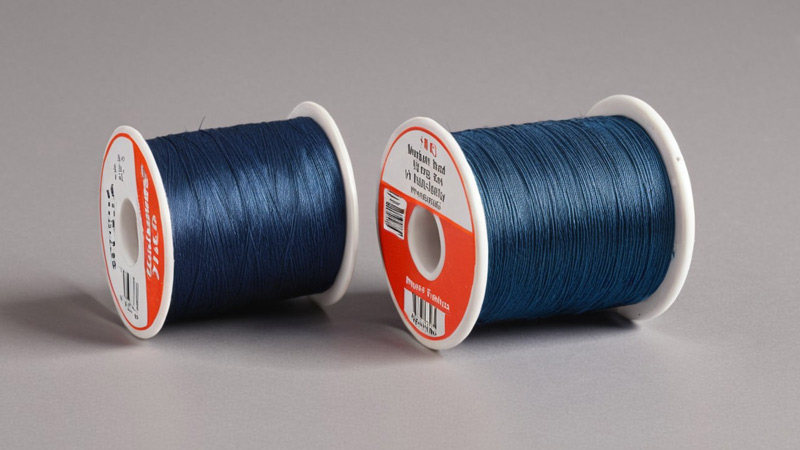
Canopies intended for marine applications demand threads that can withstand the harsh conditions of saltwater exposure and intense UV rays.
Marine-grade threads are engineered explicitly for such environments, providing excellent durability and longevity.
Resistant to saltwater corrosion and UV degradation, these threads contribute to the robust construction of marine canopies.
Using marine-grade threads ensures that the seams remain intact and reliable, even in challenging marine conditions, making them an optimal choice for crafting canopies for boats, yachts, or other marine settings.
Coated Polyester Thread
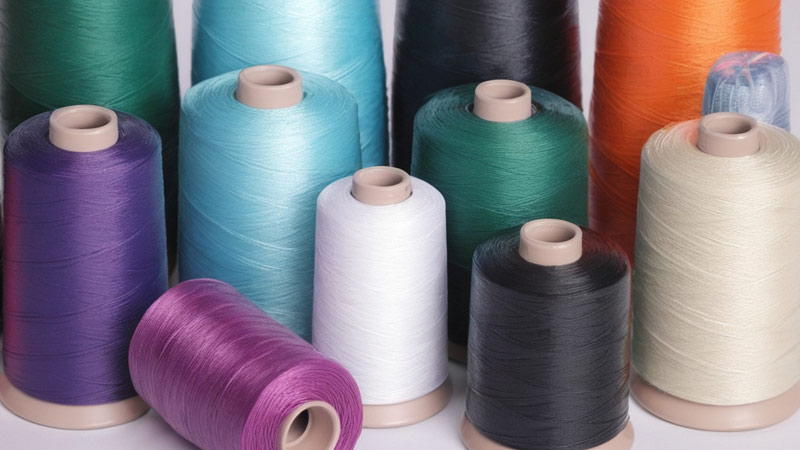
Coated polyester threads feature an additional layer of water-resistant coating, making them ideal for canopies exposed to moisture.
This coating adds extra protection against rain or dew, enhancing the overall weather resistance of the stitched seams.
Coated polyester threads are particularly beneficial for canopies that need to repel water, preventing the fabric from becoming saturated and maintaining the canopy’s functionality and appearance in various weather conditions.
Heavy-Duty Thread
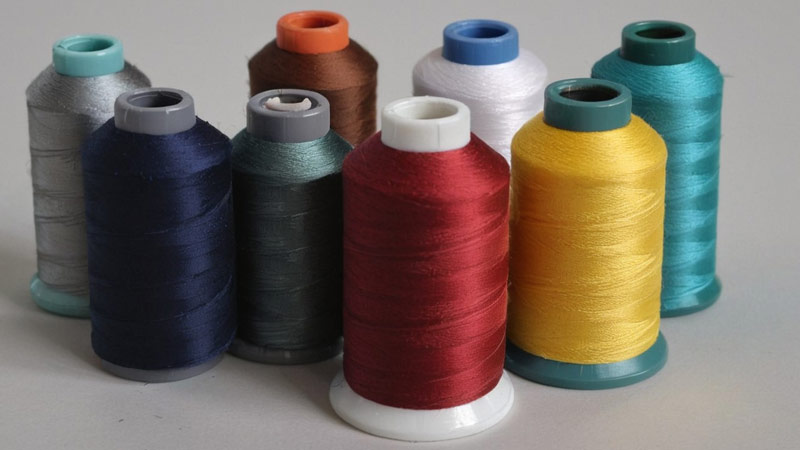
Opting for a heavy-duty thread is advisable for larger canopies or those subject to significant tension and stress.
These threads typically have a thicker diameter, providing additional strength to handle the load-bearing requirements of the canopy.
Heavy-duty threads contribute to the overall structural integrity of the seams, ensuring that the canopy can withstand the forces exerted on it, especially in larger or more demanding applications.
The robust nature of heavy-duty threads makes them a reliable choice for crafting canopies that require additional strength and durability.
Thread from Reputable Brands
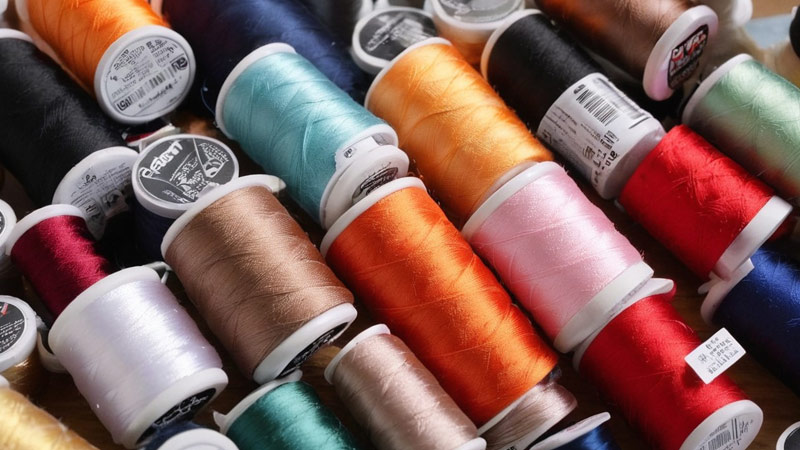
Choosing threads from well-known and reputable brands is a critical consideration in ensuring the quality and reliability of canopy seams.
Established brands such as Coats & Clark, Gutermann, and A&E have a proven track record of producing high-quality threads designed for specific applications.
These brands are recognized for their commitment to excellence, and their threads often undergo rigorous testing to meet industry standards.
Opting for threads from reputable brands assures durability, consistency, and overall performance, making them a reliable choice for crafting canopies that stand the test of time.
How to Sew a Canopy Top? Step-By-Step Instructions
Sewing a canopy top requires careful attention to detail to ensure a durable and well-finished product.
Below are step-by-step instructions to guide you through the process of sewing a canopy top:
Materials and Tools:
- Canopy fabric
- Matching thread
- Sewing machine
- Scissors or rotary cutter
- Measuring tape
- Straight pins
- Grommets
Steps:
Measure and Cut the Fabric
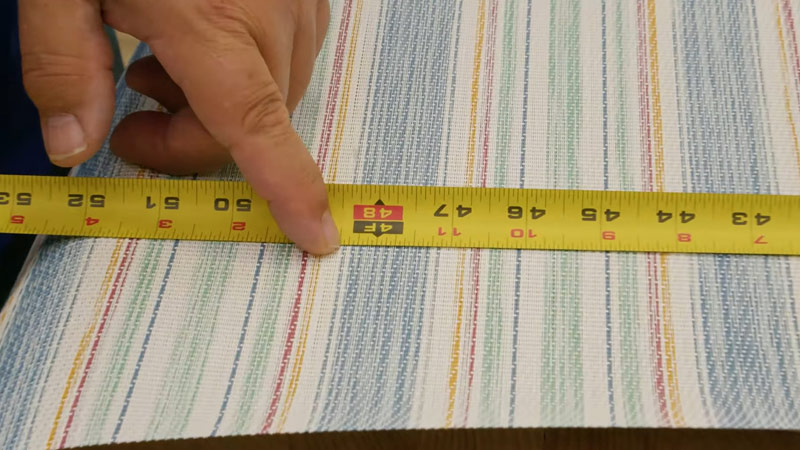
When measuring for your canopy top, take precise measurements using a measuring tape. Consider the dimensions of the space the canopy will cover, ensuring an accurate fit.
Add extra fabric around the edges for seam allowances, typically between 0.5 to 1 inch, depending on your sewing skills and the complexity of the design. If your canopy will feature hems, also account for the additional fabric needed to create them.
Prepare the Fabric Edges
To prevent fraying and ensure a clean, professional look, fold and press the edges of the fabric. This step is crucial for enhancing the longevity of your canopy. If you can access a serger, use it to create a secure edge finish.
Alternatively, a zigzag stitch on a sewing machine can serve the same purpose, effectively encasing the raw edges and preventing unraveling.
Create Hems
Hems provide stability and a polished finish to the canopy. If your design includes hems, fold the fabric edges over and sew them in place.
Ensure that the hems are uniform in width and securely stitched to prevent any potential unraveling.
A well-executed hem not only adds aesthetic value but also contributes to the overall structural integrity of the canopy.
Mark and Sew Seams
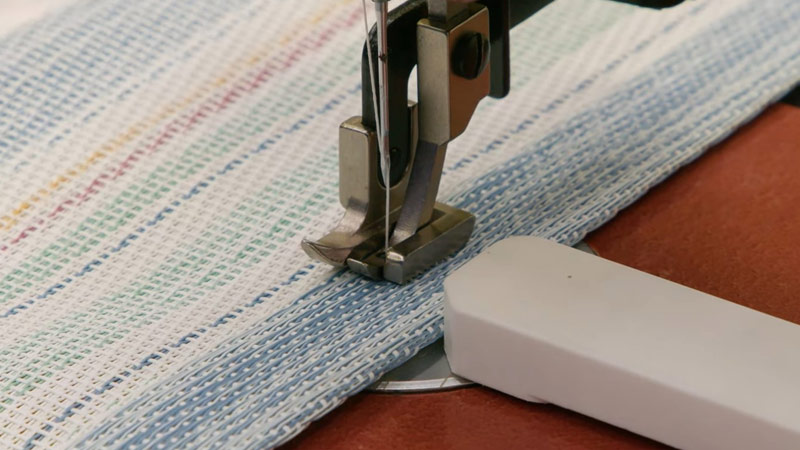
Use chalk or a fabric marker to mark the seam lines on the wrong side of the fabric. Pin the fabric pieces together along these lines, aligning them carefully.
When sewing the seams, use a straight stitch on your sewing machine. Remember to backstitch at the beginning and end of each seam to secure the stitches.
This step ensures the strength and stability of the seams, preventing them from coming apart over time.
Attach Grommets
If your canopy requires grommets for secure attachment, mark their locations along the edges of the fabric.
Follow the manufacturer’s instructions for attaching grommets, which typically involve cutting holes in the fabric and pressing the grommets into place.
Properly installed grommets provide sturdy attachment points for securing the canopy to a frame or structure.
Test for Size and Fit
Before finalizing the assembly, lay the canopy top to check its size and fit. Ensure that it aligns with your initial measurements and that all seams are secure.
This pre-installation test allows you to make any necessary adjustments to guarantee a proper fit and functionality.
Add Reinforcements
Consider reinforcing stress points, such as corners or areas where grommets are attached, to enhance the overall durability of the canopy.
This can be achieved by sewing additional layers of fabric or using specialized reinforcement tape. Reinforcements help distribute tension and prevent wear and tear over time.
Finish and Trim Excess Threads
After completing the sewing process, trim any excess fabric or threads from the seams and hems.
A neat finish not only enhances the appearance of the canopy but also prevents any loose threads from catching on objects or unraveling over time.
Test the Canopy
Install the canopy on the frame or structure for which it is designed. Test its functionality by checking for proper fit and secure attachment.
Address any issues with the fit or attachment during this testing phase and make final adjustments as needed.
Optional Weatherproofing
Depending on the intended use of the canopy, you may choose to enhance its resistance to the elements. Consider applying a waterproofing spray or seam sealer to protect the fabric from rain and moisture.
This optional step can significantly extend the lifespan of the canopy, especially if it is frequently exposed to outdoor conditions.
FAQs
What type of thread is best for sewing a canopy?
The best thread for sewing a canopy is one that is compatible with the canopy fabric. Opt for threads designed for outdoor use, with features such as UV resistance, weather resistance, and appropriate thickness based on the fabric weight.
Should I consider UV resistance when choosing thread for a canopy?
Yes, UV resistance is crucial. Threads labeled as UV-resistant are treated to withstand the damaging effects of prolonged sun exposure, ensuring the longevity of the seams on your canopy, especially if it will be exposed to sunlight regularly.
Are there specific thread constructions suitable for sewing canopies?
Yes, thread constructions vary, including bonded, twisted, and coated threads. Each has unique advantages.
Is brand quality important when selecting thread for sewing a canopy?
Yes, brand quality matters. Choosing threads from reputable brands known for producing high-quality products ensures better resistance to wear and tear.
To Recap
Selecting the right thread for sewing a canopy is crucial in ensuring its durability and resilience against outdoor elements.
The choice of thread should align with the specific characteristics of the canopy fabric, considering factors such as UV resistance, weather resistance, and appropriate weight.
Threads designed for outdoor use, with features like colorfastness and resistance to abrasion, contribute significantly to the longevity of the canopy.
It’s imperative to balance the thread’s thickness with the fabric weight and opt for reputable brands to guarantee high-quality stitching.
By making informed choices, you enhance the structural integrity of the canopy, ensuring it withstands the challenges of varied weather conditions and maintains its visual appeal over time.
Leave a Reply